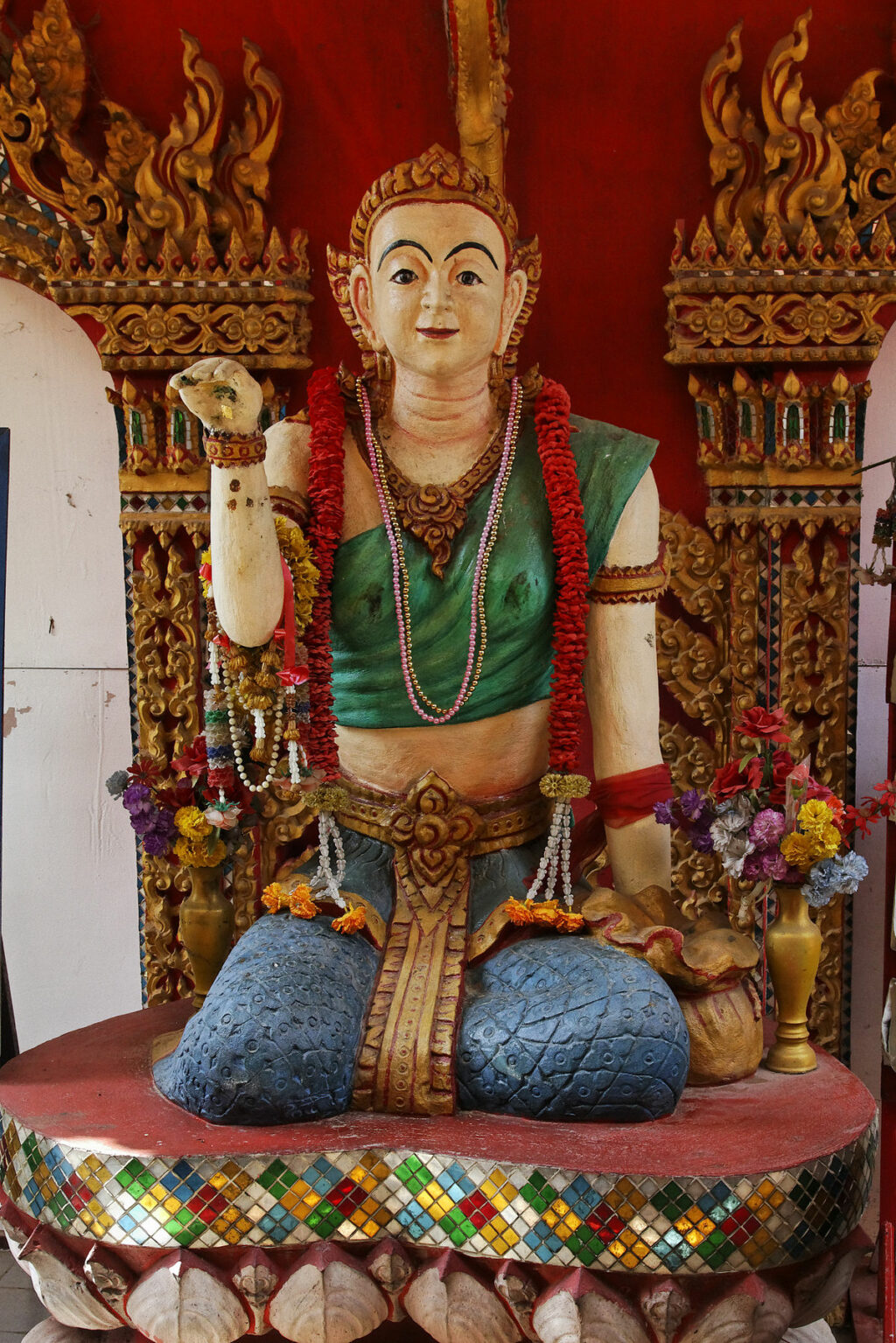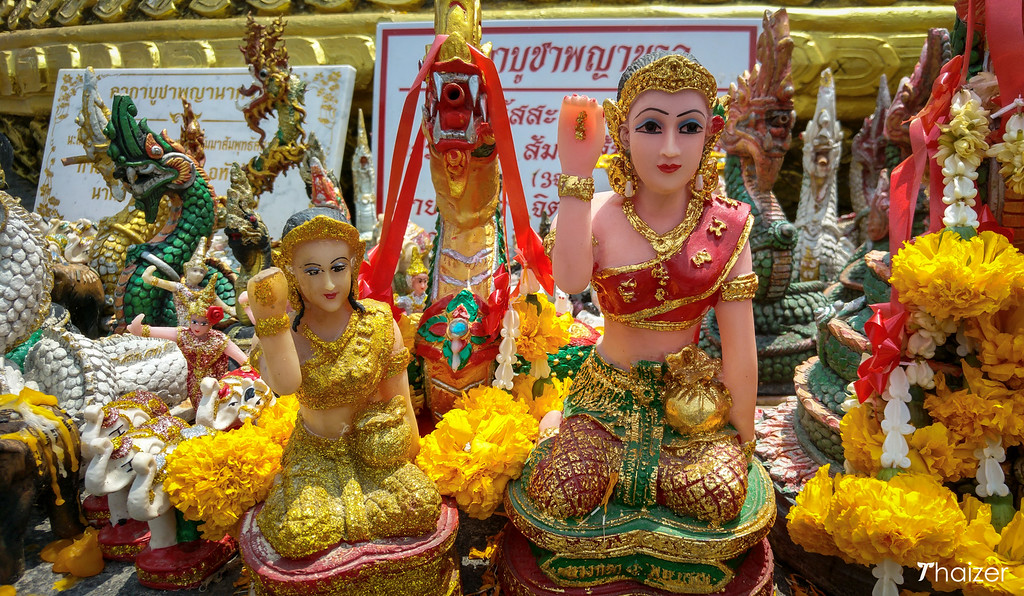In Thailand, Shiva is revered by both Thai Brahmans and Buddhists alike, and is known as “Pra Siva” or “Phra Isworn.” Shiva is incorporated into Thai Buddhism, and bt origins, is one of the most important deities in Hinduism and is often associated with the energy of destruction and transformation. However, in Thailand, Shiva is also seen as a benevolent and protective deity who offers blessings and guidance to those who seek his help. Many Thai people wear amulets or talismans with Shiva’s image as a symbol of protection and good fortune.

How To worship Shiva?
Worshiping Shiva, one of the major deities in Hinduism, can be done in many ways. Here are some general guidelines for worshiping Shiva:
1. Select a clean and quiet place for worship. It can be a temple or your own private space.
2. Place a Shiva linga, a symbol of Shiva, on a clean altar. You can also place pictures or statues of Shiva and other Hindu gods and goddesses.
3. Light a lamp and incense sticks and offer flowers to the deity.
4. Recite mantras or prayers dedicated to Shiva, such as the “Om Namah Shivaya” mantra.
5. Offer food, fruits, and sweets to the deity. You can also offer water, milk, and honey.
6. Perform abhishekam, which is the ritual of pouring water, milk, or other liquids over the Shiva linga.
7. Meditate on the deity and seek blessings from Shiva.
It is important to note that there are many variations in the way Shiva is worshiped in Hinduism, and the above guidelines are just a general overview. You can also consult with a Hindu priest or spiritual leader for more specific guidance on how to worship Shiva.
In Hinduism, Lord Shiva is considered as one of the three main deities, along with Brahma and Vishnu. Lord Shiva is known by many different names and has several different manifestations and emanations, each with its own significance and symbolism. Some of the most popular forms and names of Lord Shiva include:
- – Mahadeva
- – Rudra
- – Nataraja
- – Ardhanarishvara
- – Pashupati
- – Bhairava
- – Neelkanth
- – Shankara
- – Bholenath
These are just a few of the many names and forms of Lord Shiva, and there are many more depending on the particular tradition or subsect of Hinduism.

Who is Shiva’s Consort?
Shiva’s consort is the goddess Parvati, also known as Uma, Gauri, or Shakti. Parvati is considered to be the supreme goddess and the embodiment of Shakti (divine feminine energy). She is often depicted alongside Shiva in Hindu mythology and is regarded as the mother of the universe. Parvati is also believed to be the reincarnation of Sati, Shiva’s first wife, who immolated herself in the fire of yagna (sacrificial fire) in protest against her father Daksha’s disrespect towards Shiva.

Uma, Kali, Gauri, and Shakti are different names for the goddess Parvati, who is the consort of Shiva. These names represent different aspects or emanations of Parvati’s divine feminine energy:
1. Uma: This name means “bright” or “splendorous” and represents the gentle and compassionate aspect of Parvati’s nature.
2. Kali: This name means “the dark one” or “the black one” and represents the fierce and powerful aspect of Parvati’s nature. Kali is often depicted with a blue or black complexion, a garland of skulls around her neck, and a sword in her hand.
3. Gauri: This name means “golden” or “fair” and represents the nurturing and loving aspect of Parvati’s nature. Gauri is often depicted as a beautiful and gentle goddess, with fair skin and adorned with jewels.
4. Shakti: This name means “power” or “energy” and represents the primordial cosmic energy that gives rise to the universe. Shakti is often depicted as a fierce and powerful goddess, who can destroy evil and protect the world.
In Hindu mythology, Parvati takes on different forms and names to fulfill different roles and purposes. These names and forms represent the myriad aspects of her divine feminine energy and are revered by devotees for their protective, nurturing, and transformative powers.

Incantations and Prayers for the God Shiva
Here are some Kata (mantras), for chanting to Lord Shiva, in Roman characters for phonetic reading:
1. Om Namah Shivaya – This is one of the most popular and powerful mantras dedicated to Lord Shiva, which means “I bow to Shiva”. It is believed to cleanse the mind and body, and bring peace and harmony to the individual.
2. Om Tryambakam Yajamahe Sugandhim Pushtivardhanam – This is the Maha Mrityunjaya Mantra, which is also dedicated to Lord Shiva. It means “We worship the three-eyed one who is fragrant and nourishes all beings”.
3. Om Namo Bhagavate Rudraya – This mantra is another powerful chant dedicated to Lord Shiva, which means “I bow to the divine Rudra”.
4. Om Hara Hara Mahadev – This is a simple mantra that can be chanted by anyone, and it means “Hail to the great Lord Shiva”.
5. Om Shivoham – This mantra means “I am Shiva”, and it is believed to help the individual realize their true nature as divine consciousness.
I sincerely hope these mantras are helpful for you. Remember to always chant with sincerity, devotion, and respect for the divine.





















